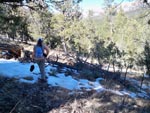 | Dawn searches the Devonian
outcrops in between patches of snow |
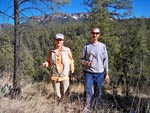 | Vince
took this shot of us at the Disphyllum locality with the Mogollon
Rim in the background |
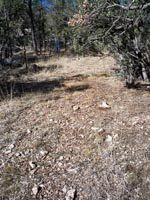 | The
ground at the Disphyllum locality is primarily dolomitic limestones
with silicified fossils eroding out. The problem with dolomite
is that it does not dissolve in muriatic acid very well if at
all, making the extraction of the corals a hit and miss process. |
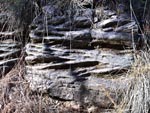 | The sandy dolomitic limestones
at the locality formed robust cross beds indications of a near
shore more energetic condition, in between the more limey dolomitic
limestones. |
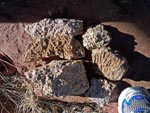 | Collection of the Disphyllum
raw material. While it doesn't look like much here, the acid
bath will free up much of the beautifully preserved corals. |
 | After the acid bath, one
specimen was nearly falling apart from internal fractures. I
left some of the limestone in the center of the coral head to
keep it together. |
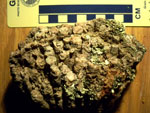 | Another Disphyllum coral
head with more silicification thus it was relatively intact. |
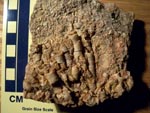 | This Disphyllum was too
diagenetially modified to preserve well and came out a mass of
silica. |
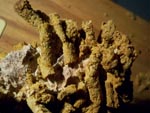 | Side view of the tabulate
coralite in the Disphyllum |
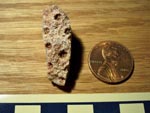 | We
also found a few Pachyphyllum corals at this locality. |
| |
The Pennsylvanian
Naco Formation
We next moved on
to another site near Christopher Creek at the Uranium mine. A
low ridge of Pennsylvanian Naco formation eroded out to reveal
massive brachiopods, and plenty of crinoid material. This is
one of the few sites we have ever found complete crinoid calyxes
with arms attached in the Naco preserved in limestone. We were
not so lucky this time, but still found some great stuff!
|
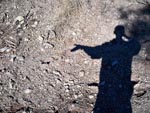 | The ground at the site
consisted of a fine grained limey shale which upon weathering
released a huge amount of small fossils. |
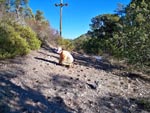 | Dawn
gets down to work examining the very small fossils present all
over the ground here. |
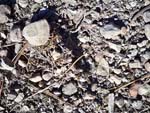 | Close
up of the ground, showing a few brachs mixed in the fragments. |
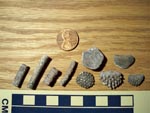 | Back home after cleaning
the specimens up I photographed a few lined up. The left end
is crinoid stems, and on the right various plates which were
originally part of a large crinoid calyx. |
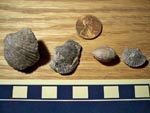 | In
addition, we found a number of spiriferid brachs, and Composita
Subtilitas. |
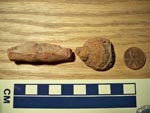 | Here is some material from
the Naco at the Tonto Creek site. Left is a red chertized shrimp
burrow, middle a rugose solitary coral. |
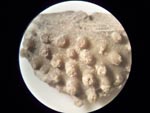 | Close
up under my stereo microscope of one of the crinoid basal plates. |